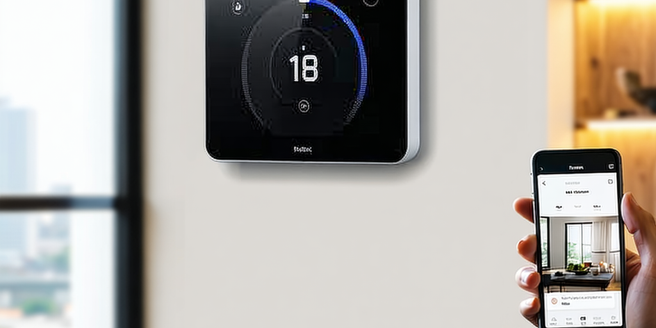
Understanding Smart Thermostats
Smart thermostats represent an evolution in home climate control. Unlike traditional thermostats, these devices connect to the internet, allowing for remote adjustments through smartphones or other connected devices. They learn from user behaviors, schedule changes, and preferences to optimize heating and cooling. Many smart thermostats are equipped with sensors and algorithms to adjust to different conditions, such as the time of day or occupancy. By adapting in real-time, smart thermostats offer greater convenience and control, presenting opportunities for energy savings and enhanced comfort. Understanding these devices involves exploring how they communicate with home networks and external data sources, adjusting settings accordingly, and providing insightful feedback. This integration of technology into home environments reflects a significant step toward smarter, more efficient energy use.
Benefits of Smart Thermostats for Home Efficiency
Investing in a smart thermostat can greatly enhance home efficiency and offer numerous benefits. These devices allow homeowners to optimize their heating and cooling schedules by learning from their daily routines and adjusting temperatures accordingly. This leads to significant energy savings, as the thermostat minimizes energy usage during times when heating or cooling is not needed. Additionally, many smart thermostats offer real-time energy consumption tracking, helping users understand their patterns and modify them for further savings. Over time, these adjustments can result in reduced utility bills, making the initial investment worthwhile. The convenience of remote management via apps allows users to control their home environment from anywhere, ensuring comfort while maximizing efficiency even when they’re away. This technological advancement simplifies energy management, making homes smarter and more sustainable.
How Smart Thermostats Save Energy
Smart thermostats contribute to energy savings by learning user preferences and adapting to daily routines. Initially, they gather data on how and when a household uses heating and cooling. Over time, they create a customized schedule that optimizes energy use, ensuring that heating and cooling occur only when necessary. This reduces wasted energy and lowers utility bills. Moreover, features like geofencing can adjust settings based on the occupants’ location, ensuring that energy is not wasted when the home is unoccupied. The capability to analyze and adjust to external weather conditions allows these thermostats to make informed decisions about when to start or stop a system. By managing HVAC systems more efficiently, smart thermostats decrease energy consumption, thus promoting environmental sustainability and cost-effective home management.
Comparing Smart Thermostat Features
Choosing the right smart thermostat involves comparing various features to find the best fit for your home’s needs. Key features include compatibility with existing HVAC systems, ease of installation, and the ability to integrate with other smart home devices. Some models come with advanced sensors that detect motion and occupancy, allowing for more precise temperature control. User-friendly interfaces and mobile app compatibility are essential for maximizing usability. Other features to consider include voice control options and the ability to learn your schedule over time. Reviewing customer feedback and energy-saving statistics can provide insights into the thermostat’s real-world efficiency. By carefully analyzing these features, homeowners can select a model that aligns with their comfort preferences and efficiency goals, ensuring a wise investment in home automation.
Tips for Maximizing Smart Thermostat Efficiency
To make the most out of your smart thermostat, it’s crucial to program it correctly and take advantage of its features. Start by setting a schedule that reflects your household’s routine, ensuring that heating or cooling is active only when needed. Make use of geofencing features that adjust settings based on your proximity to home, so energy isn’t wasted if you’re away. Regularly update your thermostat’s firmware to benefit from new features and improvements. Incorporating seasonal adjustments, such as lowering temperatures slightly in winter months, can increase energy efficiency. By analyzing energy usage statistics provided by the thermostat’s app, you can spot trends and make informed adjustments. Following these tips will help you maintain optimal home comfort while reducing energy consumption, leading to cost savings and a reduced environmental footprint.
